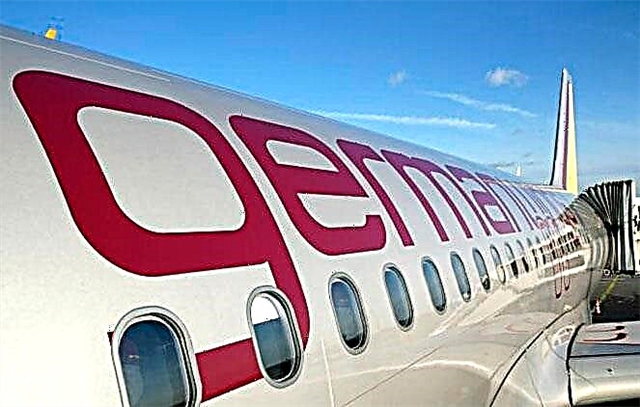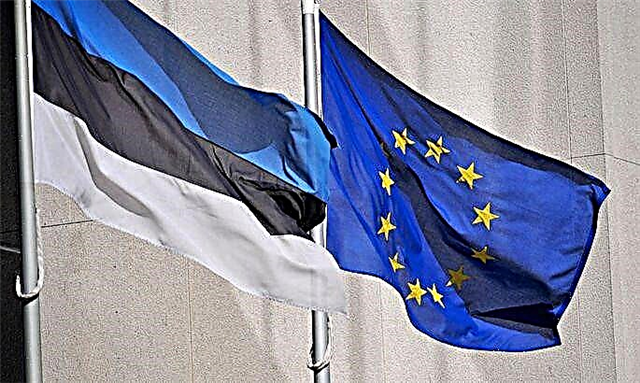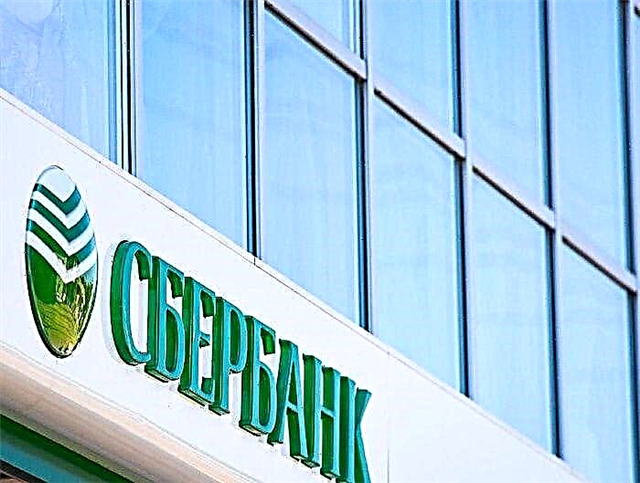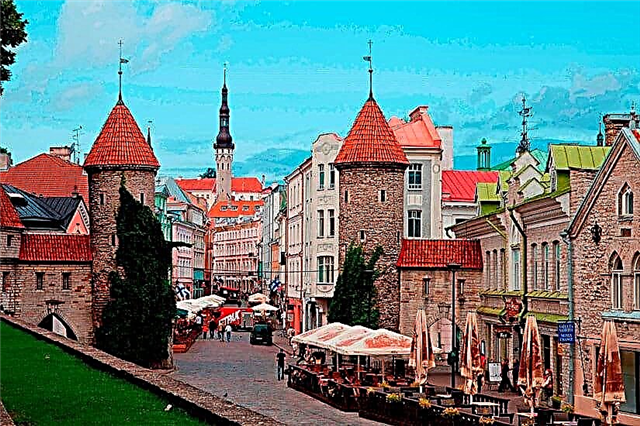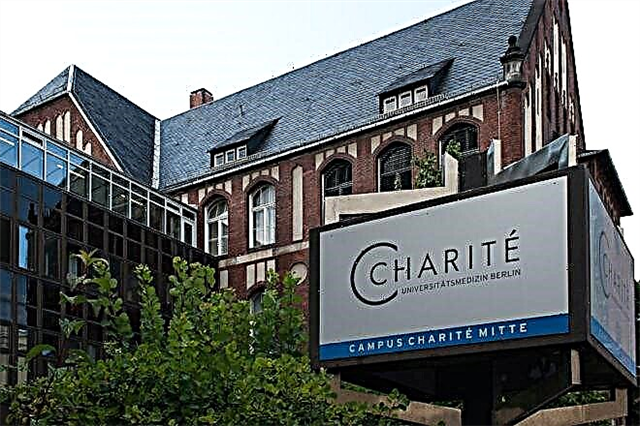In the process of treating certain diseases, an important role is played not only by the professionalism of the attending physician, but by the institution in which you will have to be treated. Today, the standard of quality services in this area is one of the largest university medical complexes in Europe - the Charite clinic. Here they not only take on the most difficult cases, but also conduct research, train doctors. By the way, most of Germany's Nobel laureates in the field of physiology and medicine were educated at the Charité.

What is Charite
In 1710, which is considered the year of the establishment of the clinic, this medical institution served as an infirmary, providing assistance in the fight against the plague that was raging in most of Europe at that time. Its name "hospital of mercy" (in French Charité) received from King Friedrich Wilhelm immediately after it became clear that the epidemic bypassed Brandenburg and Berlin.
From the very beginning of its creation, the Charité civilian hospital was a place where military doctors were trained in the art of healing people. They mastered the theory at the University of Berlin, which over time began to place its buildings on the territory of the clinic.
This symbiosis of practice and science instantly brought fame to the medical institution, which later became famous for their work by Robert Koch, Rudolf Virchow, Hermann von Helmholtz.
In 2003, the Charite and the VU Berlin Clinic merged. This further strengthened her credibility in European medical circles.
Today the conglomerate includes:
- 17 centers of narrow specialization, which include more than a hundred clinics and institutes in their structure;
- approximately 3200-3500 beds for inpatients;
- more than 13 thousand employees, of which almost 4 thousand are scientists and doctors. There are 4 medical personnel for each patient undergoing treatment.
About 660 thousand outpatients and 140 thousand inpatients undergo treatment at the Charité within one year. More than 74 thousand surgical interventions are performed in the clinic annually and over 5 thousand babies are born.
629 - this is how many organ transplants are performed in the clinic.
About 7000 students study here, 1300 of whom are foreigners.
Territorial medical complex "Charite" is located in four districts of Berlin. Each of the campuses got its own name:
- Campus Charité Mitte - “Charité” Center (CCM);
- Benjamin Franklin - Benjamin Franklin Center (CBF);
- Campus Verlin Buch - Berlin Buch (SVV);
- Campus Virchow-Klinikum - Virchow Clinic (CVK).
What directions are presented in the clinic
All Charite institutes and clinics are united in 17 centers of various specializations:
- Center for Anesthesiology, Intensive Medicine and Operations Management;
- Center for Basic Medicine;
- Surgical Center;
- Center for Diagnostic and Invasive Radiology and Radiation Medicine;
- Center for Human Studies;
- Center for Therapy Research;
- Center for Neurosurgery, Neurology and Psychiatry;
- Center for Internal Medicine and Dermatology;
- Center for Internal Medicine including Gastroenterology and Nephrology;
- Center for Cardiovascular Medicine;
- Rehabilitation Center and Accident Surgery Department
- Cancer Treatment Center;
- Center for Audiology, Ophthalmology and Treatment of Ear, Throat and Nose Diseases;
- Center for Preventive and Diagnostic Laboratory Medicine;
- Center for Maxillofacial Surgery;
- Gynecological Center;
- Center for Pediatric and Adolescent Medicine, including a perinatal department and a center for medical genetics;
The leading directions of the medical complex are:
- orthopedics,
- oncology,
- neurosurgery,
- general pediatrics,
- neurology, including diseases of the spine and the musculoskeletal system in general,
- visceral and vascular surgery,
- transplantology,
- cardiology,
- postpartum medicine.
Only the oncological direction has 7 centers at its disposal, where the latest drugs are used and innovative developments in the field of surgery are applied. The Charite Transplant Clinic in Berlin is the largest in Europe. Here, bone, stomach, kidney, and pancreas transplants are performed.
Diagnostics, treatment and rehabilitation in the clinic
The first step in treating any disease is to diagnose it. At Charité it is carried out on modern equipment, which is tested here, in a special center. The technical capabilities of the medical facility provide high-precision examination and detection of diseases at the earliest stages.
Laboratory diagnostics deserves special attention. It is served by about 400 employees, which allows the institution to have the status of the largest clinical laboratory in the European Union.
They carry out diagnostics in the following areas:
- microbiology,
- molecular genetics,
- virology,
- allergy diagnostics,
- examination for the detection of autoimmune diseases,
- immunology,
- oncology.
The radiological department is also one of the largest. Here, patients are offered a full range of imaging diagnostics, which is also used in minimally invasive surgery. The center has at its disposal: 14 CT machines, 12 MRI units, numerous ultrasound devices.
Among the hybrid survey methods, two leading ones should be noted:
- PET / CT - positron emission tomography;
- SPECT-CT - single-photon emission CT.
As for the methods of treating diseases, German experts are of the general opinion that it is first necessary to apply therapeutic regimens and only then, if they turn out to be ineffective, proceed to surgery.
A distinctive feature can be considered the use of minimally invasive methods of intervention. Most often, they are performed under imaging control.
In the treatment of vascular diseases, preference is given to the following methods:
- Stenting, balloon angioplasty - inflating a vessel with a special balloon through a catheter.
- Thrombolysis - the introduction of thrombolytics that promote the resorption of blood clots.
- Embolization is the gluing of a vessel by means of special substances.
- Phlebectomy - removal of a vein through incisions.
- Endovasal laser coagulation - sealing a vein with a high-frequency laser light flux.
Charité has seven cancer departments across three campuses.
It also uses advanced equipment and the latest developments in this area:
- Cyber-Knife is a radiosurgical knife for highly effective therapy of tumor formations.
- Radiation and chemotherapy, which, thanks to the use of the latest drugs and medical technologies, make it possible to achieve better results in the treatment of tumors than doctors in other countries can do.
- Da Vinci robot. This system has been used in the clinic since 2021. Allows you to remove only the affected tissue without affecting healthy ones. Provides the doctor with a three-dimensional view, multiple magnification and excellent illumination of the organ being operated on.
- Gamma Knife - allows you to remove neoplasms in the brain without penetrating into tissues and leaving no incisions.
- Tomotherapy is one of the types of radiation treatment for cancer.
Minimally invasive methods are used in all Charité departments. For example, in urology, robotic prostatectomy is actively used, which leaves only three small punctures on the patient's body.This method of treating prostate diseases became possible thanks to the same Da Vinci robot.

The stage of recovery after undergoing operations and serious illnesses is no less difficult. The clinic's specialists are of the opinion that proper rehabilitation is a guarantee of complete recovery.
A whole group of doctors works with each patient here. Depending on the nature of the disease, an individual scheme is selected, which may include drug treatment, physiotherapy, massages, and work with a psychologist. If necessary, the patient may be advised to recover at one of the country's resorts.
How much does the treatment cost?
The prices for treatment at the Charité for foreigners can be quite high. The cost depends on the complexity and neglect of the disease, on the age of the patient, the presence of other diseases. The degree of comfort of the selected ward and the category of the doctor will also be taken into account.
Reception of a professor will cost several times more than an ordinary specialist. If you choose the second one, you can save about 30% of the total check that you receive for the entire period of your stay at the clinic.
The cost estimate looks like this (in euros):
| Therapeutic treatment for cancer | 4,000-5,000 euros for 1 day |
|---|---|
| Ultrasound diagnostics | 300 |
| CT scan | 800-2 000 |
| Knee or hip replacement | 18,000-19,000 for a 2 week stay |
| Leukemia treatment (bone marrow transplant, chemotherapy, rehabilitation) | 250,000 for the entire course |
It should be remembered that Charite is a public medical institution. Therefore, the price list for services is formed by the country's Ministry of Health.
How to organize your trip
First, you need to make sure that Charite is treating the disease you are interested in. The official website of the institution will help you with this. Next, you need to write a request to the clinic. If you know exactly which doctor's consultation you need, you can indicate this in your letter. In this case, the administration will send your request to the doctor, and then you will discuss all medical aspects with him.
Pay attention to the following details:
- The letter must be in German or English.
- An epicrisis and all documents with the results of the diagnostics should be attached to it.
- All papers not drawn up in the languages indicated above must be translated into them.
After considering your request, the clinic will make an estimate of the upcoming treatment. Most often, it already includes a hospital stay, direct treatment, medicines and services.
After you transfer funds to the account of the medical institution, an invitation will be sent to you. It must be attached to the package of documents for obtaining a visa.
Most often, patients from abroad are granted a category C entry permit (stay no more than three months in each half of the year). What documents to prepare and where to apply, read our article "Medical visa to Germany".
Intermediary firms provide substantial assistance in organizing the trip.
Conclusions
The choice of medical institutions in Germany is extremely large. A careful assessment of its merits and demerits will allow you to make sure that Charite is the best solution. The first include:
- rich research and practical experience;
- continuous improvement;
- using only the most advanced equipment;
- huge authority and recognition in medical circles around the world;
- approbation of equipment in a special center;
- the use of innovative drugs, the development of which takes place here, within the walls of the scientific center of the clinic;
- the use of minimally invasive methods of surgical operations;
- quality service and service;
- the ability to carry out diagnostics, treatment and rehabilitation within one institution.
An important aspect that does not favor Charite is the rather high prices, which are due to the status of the institution and its long history.


